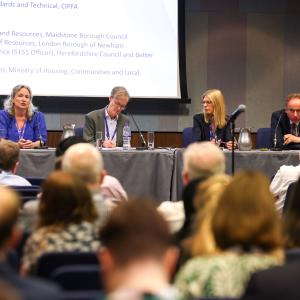Do local government and the health sector have sufficient financial stability to deliver greater integration at the pace and scale desired?
Models of delivery and funding have already been identified for the integration of social care and health. But 15 months away from the general election, the context is still one of uncertainty and pressure in the two sectors.
To understand the prospects for success, we need to look at the two areas in their entirety. To some extent health and social care are ships that pass in the night, communing only around the points of direct contact – hospital discharges into social care, public health and acute pressures. Other parts within the whole system, such as housing, regeneration or mental health services, are integrating even less frequently. And back-office services tend to have sector specific directives to achieve efficiency and economies of scale.
The question remains: will integration save hard cash in real budgets? Or is the business case presently opaque on whether earlier intervention or service coordination is better for users? Will integration only assuage rising demand without necessarily reversing it? In estimating the prospects for savings, does each sector understand the financial position of the other?
Local government finance is in a sorry state. For 2015/16, the Department for Communities and Local Government is considering reducing from 2% to 1.5% the maximum amount by which councils can increase council tax without seeking approval from residents. Councils that have settled just below 2% to avoid a referendum are labelled ‘democracy dodgers’ and no doubt the same will be said for any maximum, however much smaller that may be. To the accountant on the Clapham omnibus this looks like crude and universal capping. Most councils are clear that while they can balance the books next year, 2015/16 looks a very difficult prospect.
If local government could be said to already know the extent of its own troubles, the health sector has a more nuanced set of problems that are harder to articulate. After decades of centralised national and regional control, the old NHS order has been dismantled (again), but at this stage many do not understand whether or even how the new regime will work.
Andrew Lansley’s profound reforms are, however, no longer the subject of debate. Thanks to high-profile scandals, public attention is more focused on the legacy problems of unacceptable quality and culture. In terms of morale, the NHS is used to being supported by its political masters when the going gets tough but now, like local government, finds the motivation and capabilities of its officials under close media scrutiny. Another point here is that while local government is now less regulated by inspection, the health sector finds that inspection is seen as part of the solution. Will inspectors be overzealous to compensate for past errors?
The government’s assumption is that, though there might not be enough money, local government will make do. Conversely it appears to take comfort from the idea that there is enough money in health, even though it might not be in the right places. I personally think the risks here are greater than realised. Local authorities vary by a country mile in the way they deliver and organise services, whereas health bodies until now operated more to a blueprint. So if conditions or financial prospects take a turn for the worse, history tells us that the scale and momentum of financial woe can quickly escalate.
It is against this difficult context that good practice is being developed. Some of the £3.8bn Better Care Fund money will be redirected within clinical commissioning budgets toward social care and health integration. Everybody recognises that with councils cutting to the bone, protecting social care budgets and investing in integration is needed; equally, health budgets are under pressure too and need to fund new service design and alleviate acute pressures. But with uncertainty surrounding the new order, it is not yet clear whether NHS transformation will happen. Already the sentiment is that the efficiency challenge is not signed, sealed and delivered and it is not clear who is taking the lead to iron out developing problems. Some good trusts have acquired problematic ones, but find that it is stretching their organisation. Professionals are asking, what will happen next?
In the medium term, I believe that integration at scale is deliverable, but there is not sufficient evidence that this can easily be accomplished in the short term, for two reasons. First, we must develop tools to pool, plan, analyse and apportion the costs and benefits of integration on an industrial scale. CIPFA is commencing a technical project for all local spending to be mapped and reported on between all agencies in a consistent way as a foundation to this.
Second, sustained transformation needs stability, certainty and clarity to embed ongoing learning around agreed priorities; ones that are not at risk of being knocked off course. We cannot be certain that these financial or indeed political conditions will exist over the next 15 months.
Meanwhile, we must keep focused and get on with learning from best practice. Our best hope is that the contextual conditions do not deteriorate and that – in the medium term – they will improve the prospects of success.
Rob Whiteman is chief executive of CIPFA
This opinion piece was first published in the January/February edition of Public Finance magazine









